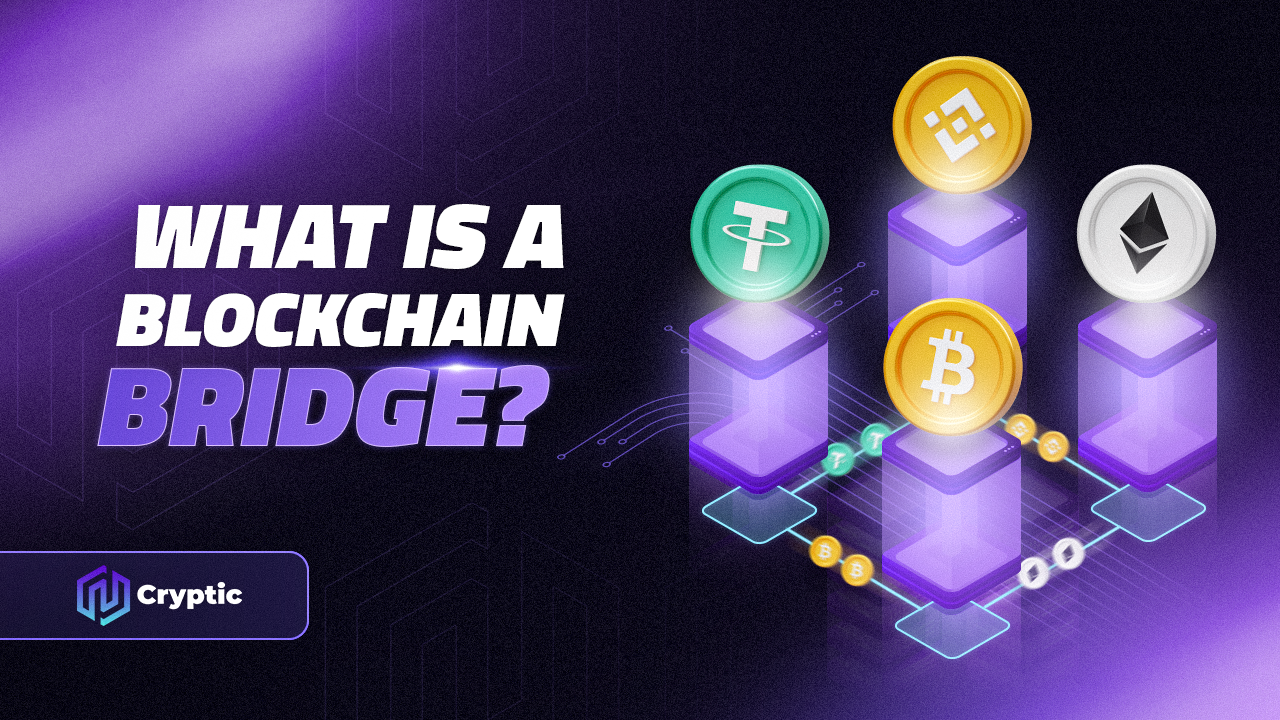In the expansive and fragmented landscape of blockchain technology, a groundbreaking innovation has emerged to bridge the gaps between disparate networks: blockchain bridges. These ingenious protocols enable the seamless transfer of assets, data, and information across previously isolated blockchains, fostering interoperability and unlocking a new era of possibilities. This article delves into the technical intricacies of blockchain bridges, simplifying their complexities and illuminating their transformative potential.
The Need for Interoperability
The proliferation of blockchains has given rise to a multitude of ecosystems, each with its own unique strengths and limitations. While this diversity fuels innovation, it also creates fragmentation, hindering the seamless flow of assets and information. Blockchain bridges address this challenge by creating pathways for cross-chain communication and interaction, enabling users to leverage the capabilities of multiple networks without sacrificing security or efficiency.
Types of Blockchain Bridges
Blockchain bridges can be classified into several categories based on their architectural designs and underlying mechanisms:
1. Centralized Bridges:
Centralized bridges rely on a trusted third party or a federation of validators to facilitate cross-chain transfers. While offering simplicity and efficiency, these bridges introduce a degree of centralization and counterparty risk, as users must place their trust in the bridge operator.
2. Decentralized Bridges:
Decentralized bridges, also known as trustless bridges, leverage smart contracts and cryptographic protocols to enable secure and transparent cross-chain transfers without relying on a central authority. These bridges prioritize decentralization and security, but often involve more complex technical implementations.
3. Hybrid Bridges:
Hybrid bridges combine elements of both centralized and decentralized designs, seeking to strike a balance between efficiency and security. These bridges may utilize a combination of trusted validators and smart contracts to achieve their objectives.
Technical Mechanisms
Blockchain bridges employ a variety of technical mechanisms to facilitate cross-chain transfers, each with its own set of trade-offs:
1. Lock and Mint:
The lock and mint mechanism involves locking an asset on the source chain and minting a corresponding wrapped asset on the destination chain. The wrapped asset represents the original asset and can be used within the destination chain’s ecosystem. To redeem the original asset, the wrapped asset is burned on the destination chain, and the original asset is unlocked on the source chain.
2. Liquidity Networks:
Liquidity networks utilize pools of assets on both the source and destination chains to facilitate cross-chain transfers. Users can swap assets on one chain for corresponding assets on another chain, leveraging the liquidity provided by the network.
3. Relayers and Validators:
Relayers and validators play crucial roles in many blockchain bridge implementations. Relayers monitor events on the source chain and relay relevant information to the destination chain, while validators verify the authenticity and integrity of cross-chain transactions.
4. Sidechains and State Channels:
Sidechains and state channels offer alternative approaches to cross-chain communication. Sidechains are separate blockchains that are pegged to a main chain, allowing for the movement of assets between the two. State channels enable off-chain transactions between parties, with final settlement occurring on the main chain.
Benefits and Use Cases
Blockchain bridges offer a multitude of benefits and enable a wide range of use cases:
- Increased Liquidity: By connecting isolated liquidity pools across different blockchains, bridges enhance the overall liquidity of the ecosystem, enabling users to access a wider range of assets and markets.
- Expanded Functionality: Bridges allow users to leverage the unique capabilities of different blockchains, combining their strengths to create new and innovative applications.
- Cross-Chain DeFi: Bridges empower users to participate in decentralized finance (DeFi) activities across multiple blockchains, accessing a broader array of lending, borrowing, and trading opportunities.
- NFT Interoperability: Bridges enable the seamless transfer of non-fungible tokens (NFTs) between different blockchains, enhancing their accessibility and liquidity.
- Cross-Chain Gaming: Bridges allow gamers to transfer in-game assets and currencies across different blockchain-based games, creating a more interconnected and immersive gaming experience.
Challenges and Risks
While blockchain bridges offer immense potential, they also present several challenges and risks:
- Security: Bridges are complex protocols that can be vulnerable to exploits and attacks, potentially leading to the loss of user funds.
- Centralization: Some bridge designs introduce centralization and counterparty risk, requiring users to place their trust in bridge operators.
- Scalability: As the volume of cross-chain transactions increases, bridges may face scalability challenges, impacting their efficiency and performance.
- Complexity: Implementing and maintaining blockchain bridges requires technical expertise and careful consideration of security and scalability factors.
Bridger.Finance: Your Gateway to DeFi
Bridger Finance (https://bridger.finance/) streamlines your decentralized finance (DeFi) journey. Their cross-chain bridge lets you move assets seamlessly between blockchains, opening up new opportunities. The yield aggregator automatically finds the best returns for your investments, while the decentralized exchange enables secure, direct token swaps. Bridger.Finance empowers you to explore and maximize your DeFi potential.
Conclusion
Blockchain bridges represent a pivotal advancement in the evolution of blockchain technology, enabling interoperability and unlocking a new era of possibilities. By connecting disparate networks and facilitating the seamless transfer of assets, data, and information, bridges empower users to leverage the capabilities of multiple blockchains, fostering innovation and expanding the boundaries of what is possible. While challenges and risks remain, the transformative potential of blockchain bridges is undeniable, and their continued development and adoption will undoubtedly shape the future of the blockchain landscape.



